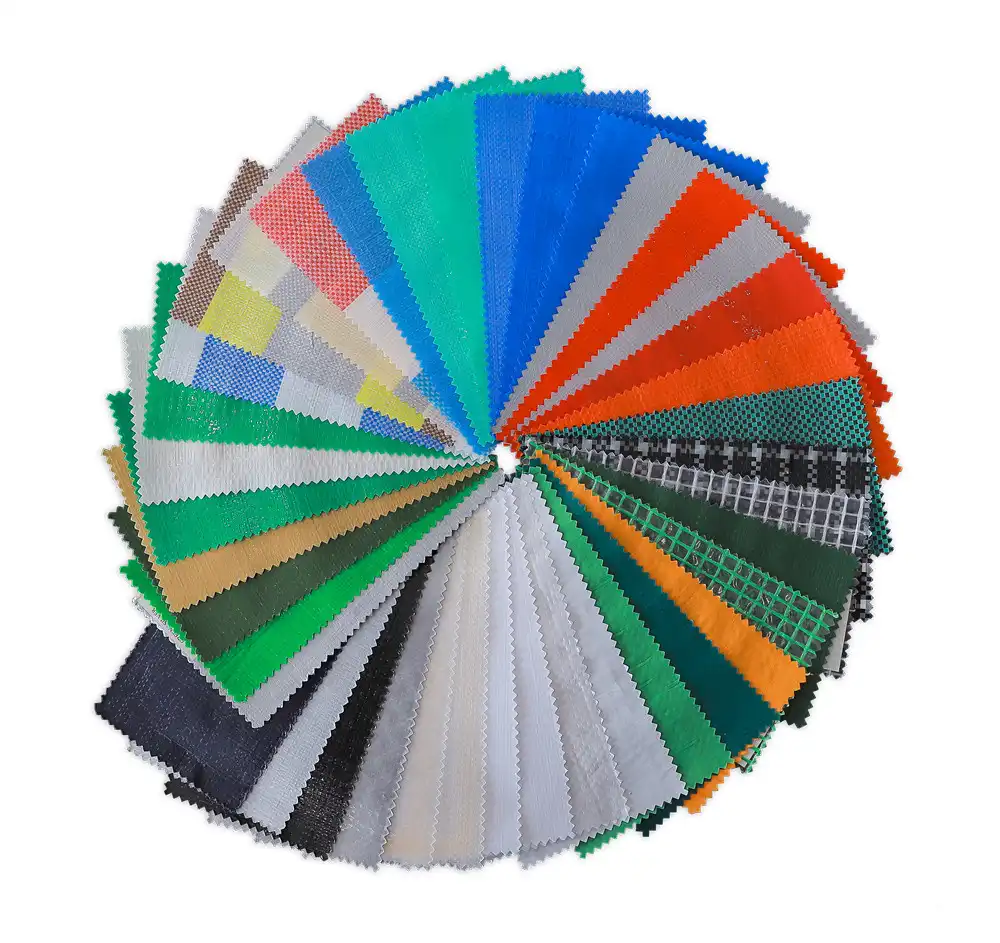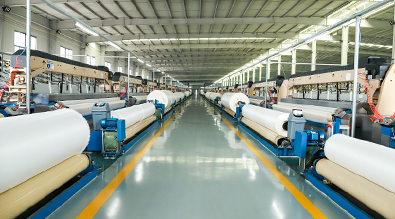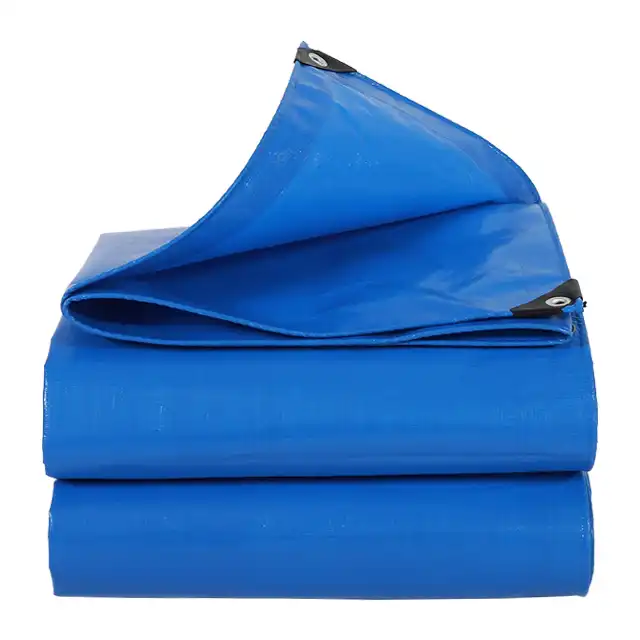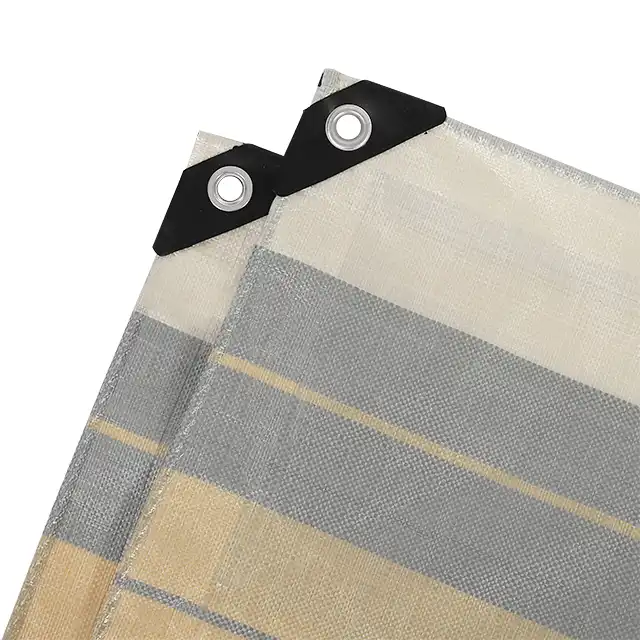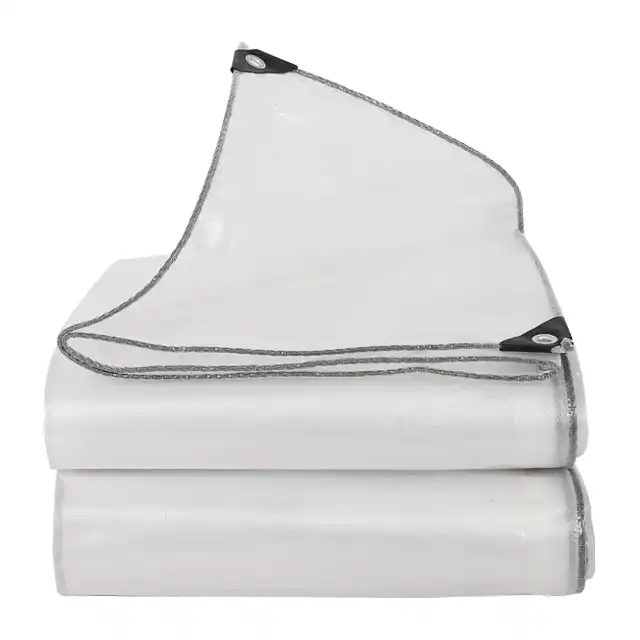How to Secure a Tarpaulin on a Truck Safely?
Securing a Truck Tarpaulin properly on your vehicle is essential for cargo protection, road safety, and regulatory compliance. Whether you're hauling construction materials, agricultural products, or general freight, the correct installation and fastening of truck tarpaulins prevents cargo damage from weather elements, reduces the risk of load spillage, and ensures you meet transportation regulations. Professional-grade HDPE Trailer Truck Cover Tarpaulin systems require specific techniques and equipment to achieve optimal security and performance throughout your journey.
Essential Preparation and Equipment Selection
Choosing the Right Truck Tarpaulin Material and Size
 The foundation of secure tarpaulin installation begins with selecting appropriate materials designed for heavy-duty applications. High-density polyethylene (HDPE) woven fabric with low-density polyethylene (LDPE) coating provides exceptional durability and weather resistance for commercial trucking operations. These Truck Tarpaulin materials typically feature mesh counts ranging from 10x10 to 18x18, offering superior tear resistance and structural integrity under high-wind conditions. Professional HDPE Trailer Truck Cover Tarpaulin products incorporate UV treatment levels between 1% and 7%, ensuring extended service life even under constant sun exposure. The weight specifications for commercial applications generally range from 200gsm to 280gsm, providing the optimal balance between protection and handling convenience. Modern manufacturing processes enable tarpaulin widths up to 5.1 meters without joints, eliminating potential weak points that could compromise cargo security during transport.
The foundation of secure tarpaulin installation begins with selecting appropriate materials designed for heavy-duty applications. High-density polyethylene (HDPE) woven fabric with low-density polyethylene (LDPE) coating provides exceptional durability and weather resistance for commercial trucking operations. These Truck Tarpaulin materials typically feature mesh counts ranging from 10x10 to 18x18, offering superior tear resistance and structural integrity under high-wind conditions. Professional HDPE Trailer Truck Cover Tarpaulin products incorporate UV treatment levels between 1% and 7%, ensuring extended service life even under constant sun exposure. The weight specifications for commercial applications generally range from 200gsm to 280gsm, providing the optimal balance between protection and handling convenience. Modern manufacturing processes enable tarpaulin widths up to 5.1 meters without joints, eliminating potential weak points that could compromise cargo security during transport.
Pre-Installation Inspection and Safety Protocols
Before attempting any tarpaulin installation, conduct comprehensive visual inspections of both the covering material and truck bed components. Examine the Truck Tarpaulin surface for signs of wear, punctures, or weakened areas that could expand under wind stress or cargo pressure. Check all D-rings, grommets, and reinforced edges for structural integrity, as these components bear the primary load during securement. Inspect truck bed tie-down points, ensuring they meet manufacturer specifications and show no signs of corrosion or damage. HDPE Trailer Truck Cover Tarpaulin systems require clean, debris-free installation surfaces to prevent abrasion and ensure proper adhesion to cargo contours. Document any deficiencies found during inspection and replace compromised components before proceeding with installation. Safety protocols mandate the use of appropriate personal protective equipment, including non-slip footwear and safety harnesses when working at elevated positions on truck beds or trailers.
Essential Tools and Hardware Requirements
Professional tarpaulin securement requires specialized equipment designed for heavy-duty applications and repeated use. Ratchet straps with working load limits appropriate for your cargo weight provide superior tensioning capability compared to traditional tie-down methods. Bungee cords with integrated hooks offer flexibility for accommodating irregular load shapes while maintaining consistent tension across varying temperature conditions. Ball bungees serve as auxiliary fastening points for securing tarpaulin edges and preventing wind-induced flapping. Heavy-duty carabiners and shackles enable quick attachment and release of securement hardware during loading operations. HDPE Trailer Truck Cover Tarpaulin installations benefit from edge clamps and spring-loaded fasteners that maintain tension automatically as loads settle during transport. Keep backup hardware readily available, including spare ratchet straps, replacement hooks, and emergency repair patches for addressing unexpected issues during transit.
Professional Installation Techniques
Proper Tarpaulin Positioning and Load Coverage
Optimal Truck Tarpaulin positioning requires systematic approach to ensure complete cargo protection and aerodynamic efficiency. Begin by laying the tarpaulin flat against the truck bed surface, allowing sufficient material to drape over the cab area and extend beyond the tailgate. The front edge should overlap the cab by at least 18 inches to prevent wind-induced lifting, while rear overhang should provide complete coverage with additional material for secure fastening. Position cargo within the truck bed to create uniform load distribution and minimize sharp edges that could puncture the covering material. Arrange irregular items to present smooth, rounded profiles that reduce wind resistance and prevent tarpaulin chafing during transport. HDPE Trailer Truck Cover Tarpaulin materials should conform closely to load contours without excessive looseness that could create billowing pockets. Strategic placement of padding materials protects both cargo and tarpaulin from damage caused by contact with sharp edges or abrasive surfaces during vehicle movement.
Systematic Securement Process and Tension Distribution
Implement a methodical approach to tarpaulin securement that ensures uniform tension distribution and prevents localized stress concentrations. Start by securing the front edge of the Truck Tarpaulin to the cab area using appropriate fastening hardware, creating a stable anchor point for subsequent operations. Work systematically from front to rear, attaching securement straps at regular intervals to maintain consistent coverage and prevent gap formation. Apply adequate tension to eliminate loose areas while avoiding excessive force that could damage the tarpaulin material or hardware components. HDPE Trailer Truck Cover Tarpaulin systems typically require tension adjustment at multiple points to accommodate load settling and material stretching during initial transport phases. Cross-pattern strap arrangements provide superior stability compared to parallel configurations, distributing loads more effectively across the entire covering system. Monitor strap tension regularly during extended trips, making adjustments as necessary to maintain optimal securement throughout the journey.
Advanced Techniques for Challenging Load Configurations
Complex cargo arrangements require specialized installation techniques to achieve reliable securement and protection. Irregularly shaped loads benefit from custom tarpaulin configurations that follow contour lines while maintaining structural integrity. Create relief folds in the Truck Tarpaulin material to accommodate protruding elements without compromising overall coverage or creating stress concentration points. Multiple tarpaulin sections may be necessary for oversized loads, requiring careful overlap management and sealing techniques to prevent water infiltration. HDPE Trailer Truck Cover Tarpaulin materials can be field-modified using appropriate repair techniques and compatible materials when standard configurations prove inadequate. Implement progressive tensioning sequences for complex installations, gradually increasing strap loads to achieve uniform coverage without creating localized stress points. Document successful configuration techniques for future reference, including hardware requirements, installation sequences, and performance observations under various operating conditions.
Safety Compliance and Maintenance Protocols
Regulatory Requirements and Industry Standards
Transportation regulations mandate specific requirements for cargo securement systems, including Truck Tarpaulin installations on commercial vehicles. Federal Motor Carrier Safety Administration (FMCSA) guidelines establish minimum performance standards for securement devices and installation procedures. State-specific regulations may impose additional requirements for particular cargo types or operating conditions, necessitating compliance verification before interstate transport operations. HDPE Trailer Truck Cover Tarpaulin systems must demonstrate adequate working load limits and safety factors appropriate for the cargo being transported. Regular inspection intervals are mandated for commercial operations, requiring documentation of securement system condition and performance. Violation of cargo securement regulations can result in significant penalties, vehicle impoundment, and increased liability exposure for transportation companies. Maintain current knowledge of applicable regulations through professional training programs and industry publications to ensure ongoing compliance.
Regular Inspection and Preventive Maintenance
Establish comprehensive inspection protocols that address all components of the tarpaulin securement system on a regular basis. Visual examinations should focus on Truck Tarpaulin material condition, including UV degradation, mechanical damage, and contamination that could compromise performance. Hardware components require inspection for wear, corrosion, and proper operation, with particular attention to high-stress areas such as attachment points and tensioning mechanisms. HDPE Trailer Truck Cover Tarpaulin materials benefit from regular cleaning procedures that remove accumulated debris and prevent degradation from environmental contamination. Document inspection findings and maintenance actions to establish performance trends and identify potential issues before they compromise system integrity. Replace worn or damaged components promptly using manufacturer-approved parts and procedures to maintain system reliability. Implement preventive maintenance schedules based on usage patterns, environmental conditions, and manufacturer recommendations to maximize service life and performance.
Emergency Procedures and Roadside Repairs
Develop comprehensive emergency response procedures for addressing tarpaulin system failures during transport operations. Carry appropriate repair materials and tools to address common issues such as strap failures, hardware damage, and minor tarpaulin punctures. Emergency repair patches compatible with Truck Tarpaulin materials can provide temporary solutions for mechanical damage until permanent repairs can be completed. Establish communication protocols for reporting system failures and coordinating assistance when roadside repairs are not feasible. HDPE Trailer Truck Cover Tarpaulin systems may require specialized repair techniques and materials not available at standard truck stops or service facilities. Train personnel in proper emergency securement techniques that can temporarily secure loose or damaged tarpaulin systems until professional repairs can be completed. Maintain emergency contact information for tarpaulin suppliers and repair services along commonly traveled routes to minimize downtime during system failures.
Conclusion
Proper tarpaulin securement combines technical expertise, quality equipment, and systematic procedures to ensure cargo protection and regulatory compliance. Success depends on selecting appropriate materials, implementing proven installation techniques, and maintaining rigorous inspection protocols throughout the service life of the system.
For professional-grade Truck Tarpaulin solutions that meet the demanding requirements of commercial transport operations, Linyi Shengde Plastic Co., Ltd stands as China's leading manufacturer with over two decades of industry expertise. As a trusted China Truck Tarpaulin factory, we provide comprehensive solutions from our state-of-the-art manufacturing facility, supported by ISO 9001:2015 certification and partnerships with international organizations including UNHCR, IOM, ICRC, and UNICEF. Our role as a premier China Truck Tarpaulin supplier encompasses custom product development, competitive Truck Tarpaulin price structures, and reliable global distribution networks. Whether you need China Truck Tarpaulin wholesale quantities or specialized Truck Tarpaulin for sale configurations, our advanced production capabilities ensure High Quality Truck Tarpaulin products that exceed industry standards. Contact our expert team at info@shengdetarp.com to discuss your specific requirements and discover why leading transportation companies worldwide trust our innovative China Truck Tarpaulin manufacturer solutions.
References
1. Federal Motor Carrier Safety Administration. "Cargo Securement Rules for Commercial Motor Vehicles." U.S. Department of Transportation, Washington, D.C.
2. Johnson, M.R. and Williams, K.L. "Heavy-Duty Tarpaulin Systems: Design Principles and Performance Standards." Journal of Transportation Engineering, Vol. 45, No. 3.
3. American Trucking Association Safety Committee. "Best Practices for Cargo Securement and Load Protection." ATA Transportation Research Board, Arlington, Virginia.
4. Peterson, D.A. "Materials Science Applications in Commercial Vehicle Load Covering Systems." International Conference on Transportation Safety Proceedings, Chicago, Illinois.
